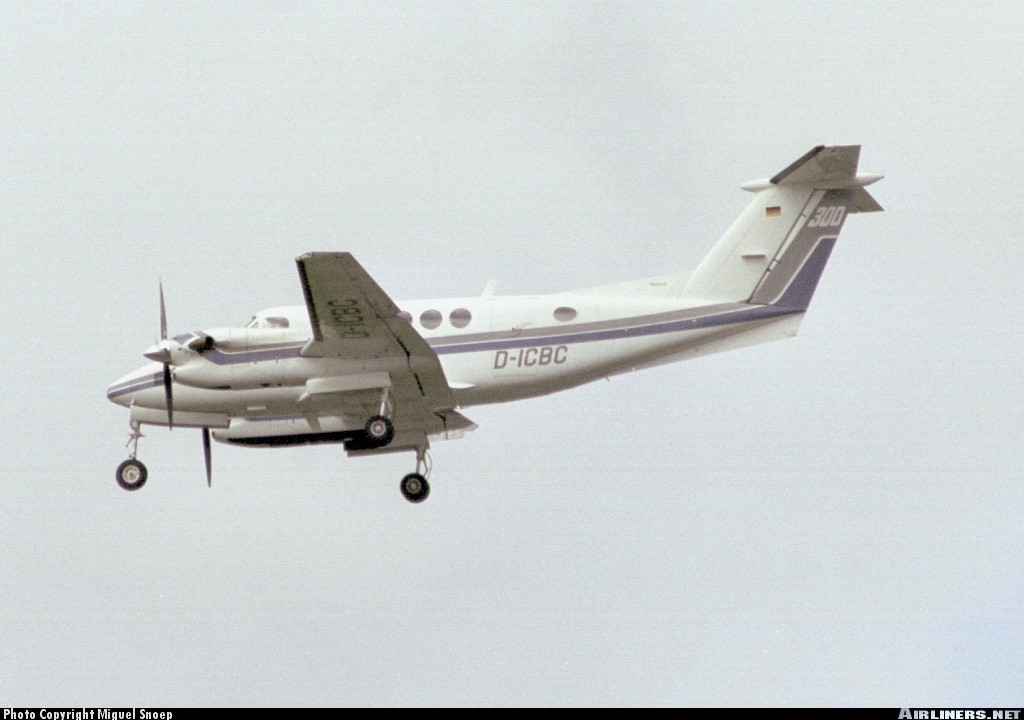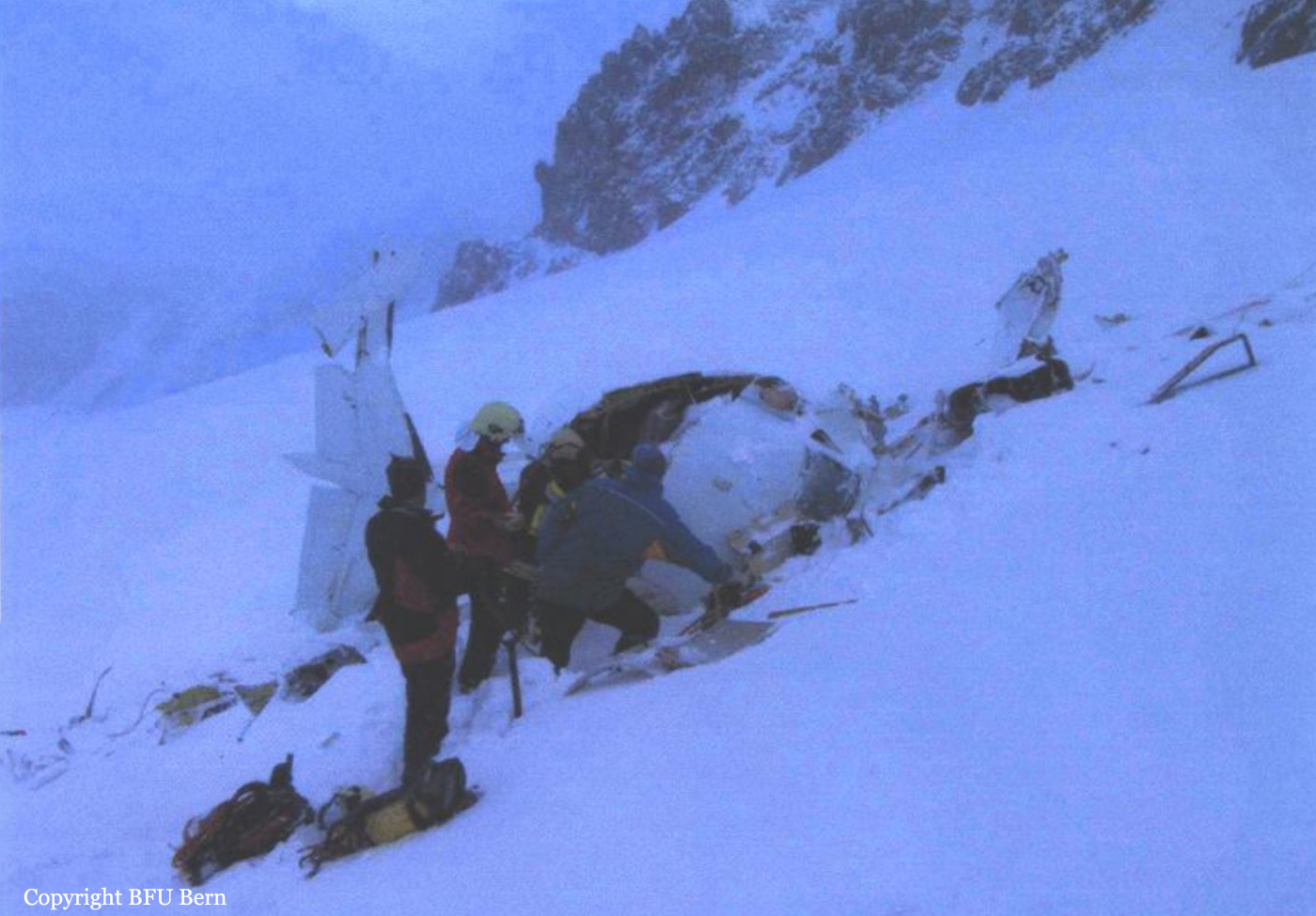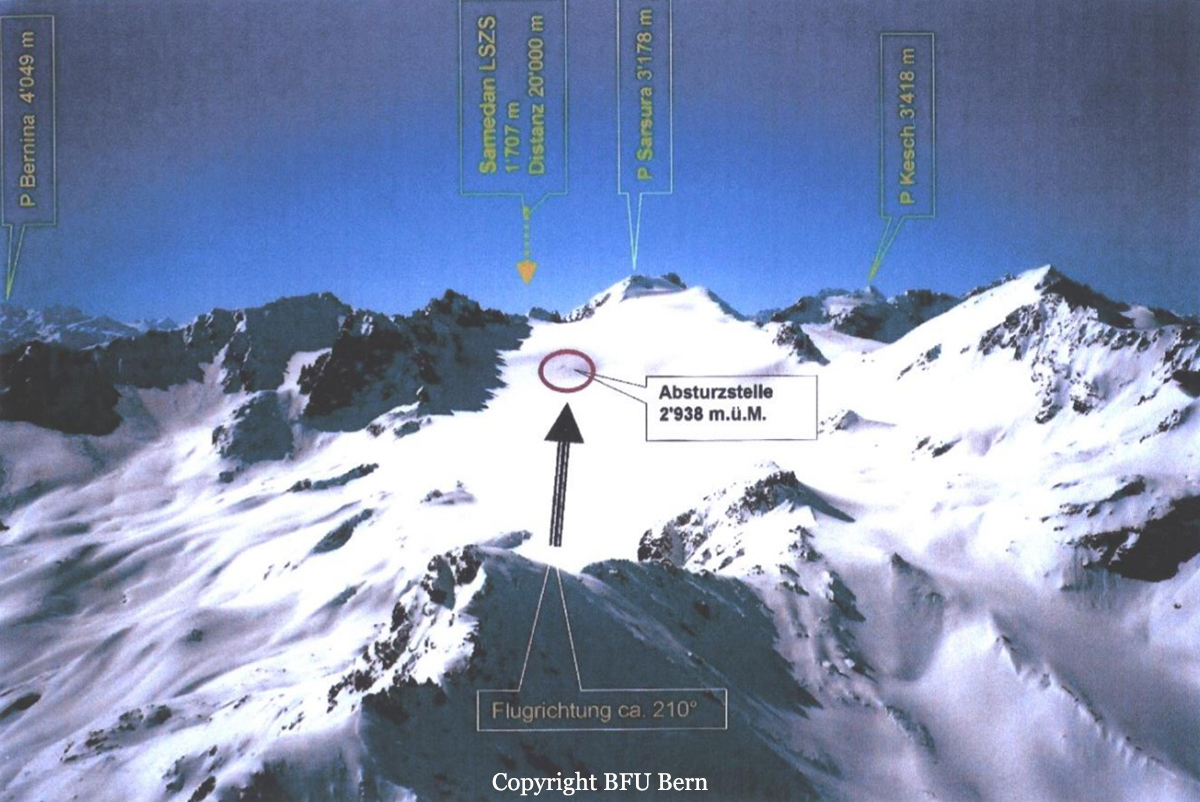Zone
Crash of a Raytheon 390 Premier IA in Samedan: 2 killed
Date & Time:
Dec 19, 2010 at 1502 LT
Registration:
D-IAYL
Survivors:
No
Schedule:
Zagreb - Samedan
MSN:
RB-249
YOM:
2008
Flight number:
GQA631V
Crew on board:
2
Crew fatalities:
Pax on board:
0
Pax fatalities:
Other fatalities:
Total fatalities:
2
Captain / Total hours on type:
244.00
Copilot / Total hours on type:
567
Aircraft flight hours:
1047
Aircraft flight cycles:
820
Circumstances:
After an uneventful flight, the IFR flight plan was cancelled at 13:53:09 UTC and the flight continued under visual flight rules. When the crew were requested at 13:54:01 UTC by the Zurich sector south air traffic controller (ATCO) to switch to the Samedan Information frequency, they wanted to remain on the frequency for a further two minutes. The aircraft was on a south-westerly heading, approx. 5 km south of Zernez, when the crew informed the ATCO at 13:57:12 UTC that they would now change frequency. After first contact with Samedan Information, when the crew reported that they were ten miles before the threshold of runway 21, the aircraft was in fact approximately eight miles north-east of the threshold of runway 21. When at 13:58:40 UTC the crew of a Piaggio 180 asked the flight information service officer (FISO) of Samedan Information about the weather as follows: "(…) and the condition for inbound still ok?", the crew of D-IAYL responded at 13:58:46 UTC, before the FISO was able to answer: "Yes, for the moment good condition (…)". D-IAYL was slightly north-east of Zuoz when the crew asked the FISO about the weather over the aerodrome. D-IAYL was over Madulein when at 13:59:46 UTC the FISO informed the crew that they could land at their own discretion. Immediately afterwards, the crew increased their rate of descent to over 2200 ft/min and maintained this until a final recorded radio altitude (RA) of just under 250 ft, which they reached over the threshold of runway 21. The crew then initiated a climb to an RA of approximately 600 ft, turned a little to the left and then flew parallel to the runway centre line. The landing gear was extended and the flaps were set to 20 degrees with a high probability. At the end of runway 21 the crew initiated a right turn onto the downwind leg, during which they reached a bank angle of 55 degrees; in the process their speed increased from 110 to 130 knots. Abeam the threshold of runway 21, the crew turned onto the final approach on runway 21. The bank angle in this turn reached up to 62 degrees, without the speed being noticeably increased. The aircraft then turned upside down and crashed almost vertically. Both pilots suffered fatal injuries on impact. A power line was severed, causing a power failure in the Upper Engadine valley. An explosion-type fire broke out. The aircraft was destroyed.
Probable cause:
The accident is attributable to the fact that the aircraft collided with the ground, because control of the aircraft was lost due to a stall.
- The following causal factors have been identified for the accident:
- The crew continued the approach under weather conditions that no longer permitted safe control of the aircraft
- The crew performed a risky manoeuvre close to ground instead of a consistent missed approach procedure
- The fact that the flight information service did not consistently communicate to the crew relevant weather information from another aircraft was a contributing factor to the genesis of the accident
As a systemic factor that contributed to the genesis of the accident, the following point was identified:
- The visibility and cloud bases determined on Samedan airport were not representative for an approach from Zernez, because they did not correspond to the actual conditions in the approach sector.
- The following causal factors have been identified for the accident:
- The crew continued the approach under weather conditions that no longer permitted safe control of the aircraft
- The crew performed a risky manoeuvre close to ground instead of a consistent missed approach procedure
- The fact that the flight information service did not consistently communicate to the crew relevant weather information from another aircraft was a contributing factor to the genesis of the accident
As a systemic factor that contributed to the genesis of the accident, the following point was identified:
- The visibility and cloud bases determined on Samedan airport were not representative for an approach from Zernez, because they did not correspond to the actual conditions in the approach sector.
Final Report:
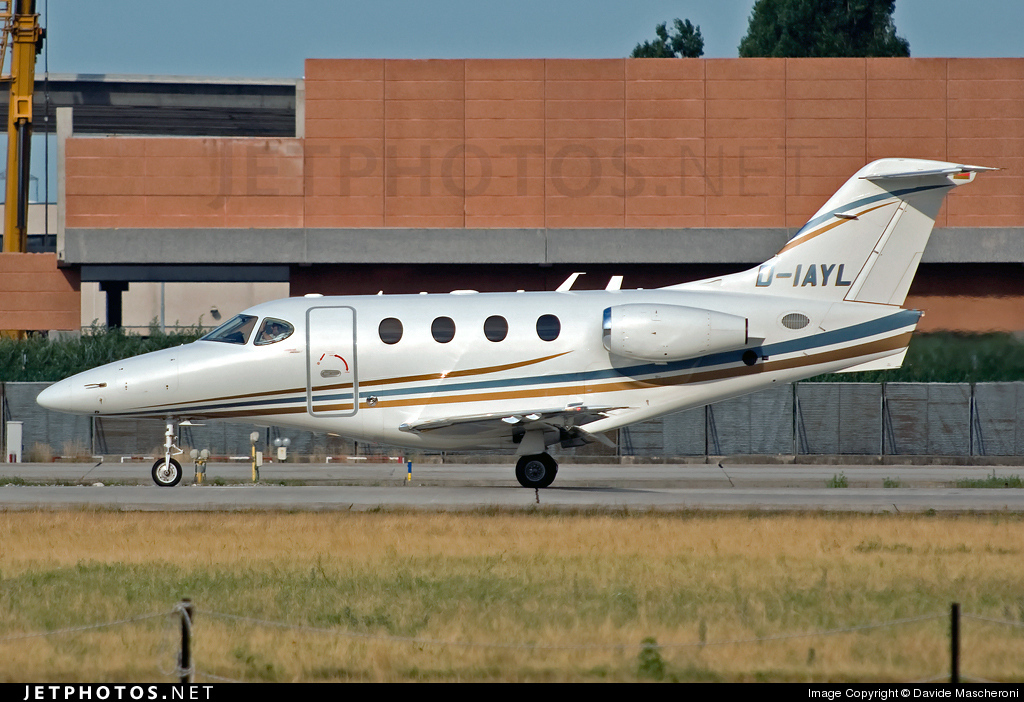
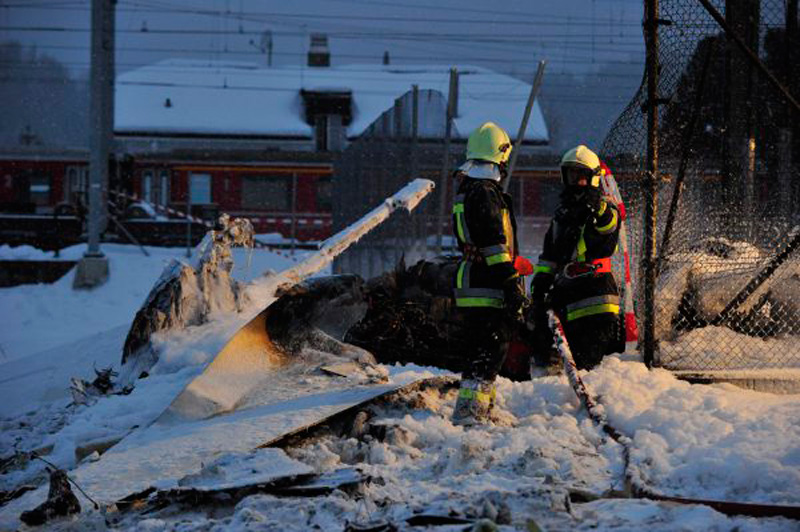
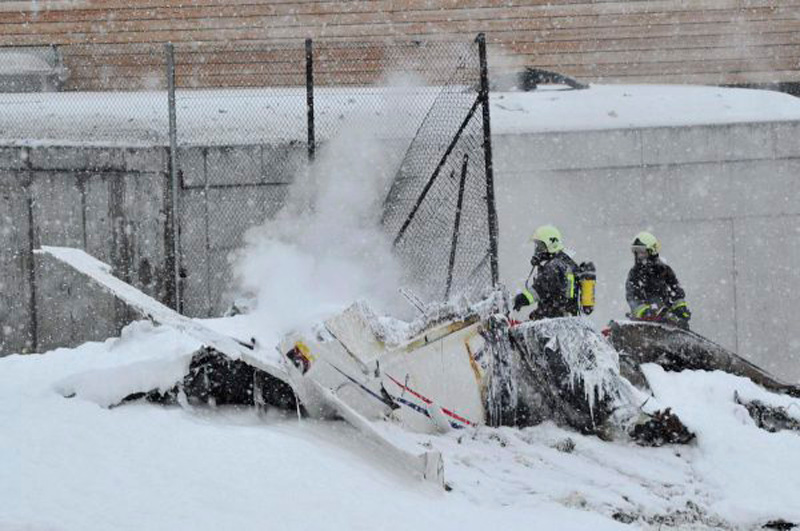
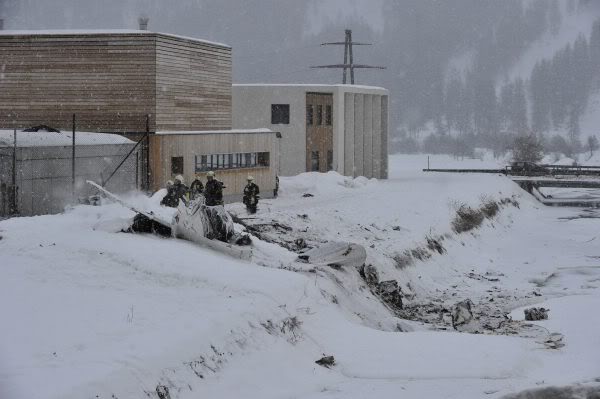
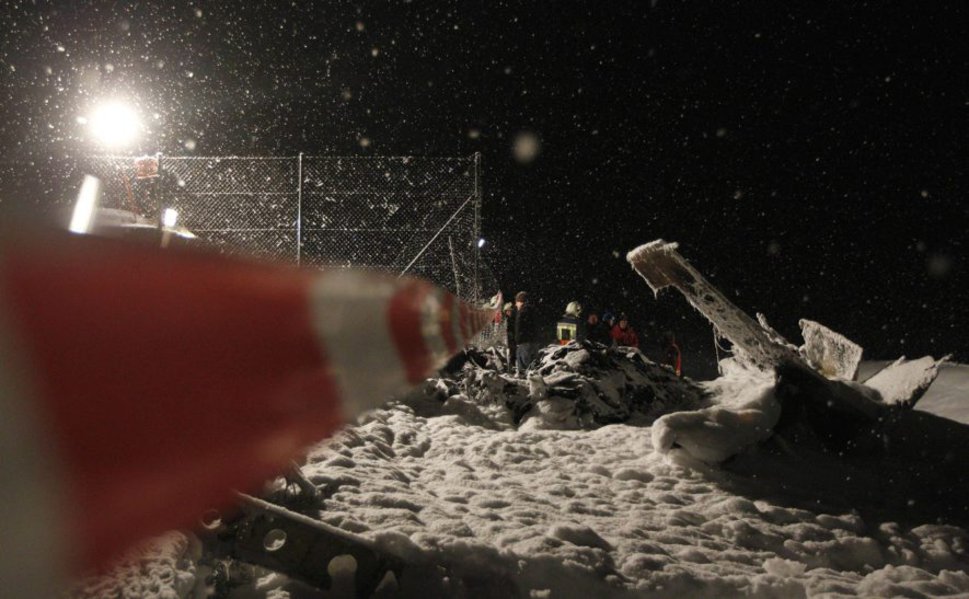

Crash of a Dassault Falcon 100 in Samedan: 2 killed
Date & Time:
Feb 12, 2009 at 1612 LT
Registration:
VP-BAF
Survivors:
Yes
Schedule:
Vienna - Samedan
MSN:
210
YOM:
1987
Crew on board:
2
Crew fatalities:
Pax on board:
1
Pax fatalities:
Other fatalities:
Total fatalities:
2
Captain / Total hours on type:
739.00
Copilot / Total hours on type:
119
Aircraft flight hours:
6386
Circumstances:
On 12 February 2009, the Marcel Dassault/Bréguet Aviation Falcon 10 aircraft, registration VP-BAF, took off at 14:06 UTC from Vienna (LOWW) on a private flight under instrument flight rules (IFR) and an ATC flight plan Y, to Samedan (LSZS). Two crew members and one passenger were on board. After an uneventful flight, the IFR flight plan was cancelled at 14:56:32 UTC and the flight continued under visual flight rules (VFR). Over Samedan the crew were informed by the Samedan airport flight information service officer (FISO) that snow clearance work would be taking place on the runway and that they should expect a ten-minute delay. After approximately 15 minutes the crew initiated the approach. On landing, the aircraft made first contact with the ground by scraping the right wing on the left half of the runway and subsequently touched down with the right, and then the left main landing gear. It then drifted to the left and the left wing tip scraped a bank of snow running parallel to the runway. As a result it rotated anti-clockwise around its vertical axis and crashed into a frozen bank of snow about four metres high. The aircraft broke into two pieces as a result of the force of the impact. The two pilots suffered fatal injuries on the impact. The passenger was seriously injured. The aircraft was destroyed. Fire did not break out.
Probable cause:
The accident is attributable to the fact that the crew wanted to make a landing with inadequate visual references from an unfavorable initial position and as a result, after touchdown the aircraft collided with a snowbank running along the runway.
The following factors contributed to the accident:
• The rapidly changing weather conditions on the mountain aerodrome of Samedan were misjudged by the crew.
• A coordinated crew working method in terms of crew resource manage-ment was missing.
• The deactivation of the EGPWS, which meant that acoustic messages con-cerning the aircraft’s height above ground and bank angle were no longer available in the final phase of the approach up to the first contact with the runway.
• A snowbank up to four metres high ran along the edge of the runway.
The following factors contributed to the accident:
• The rapidly changing weather conditions on the mountain aerodrome of Samedan were misjudged by the crew.
• A coordinated crew working method in terms of crew resource manage-ment was missing.
• The deactivation of the EGPWS, which meant that acoustic messages con-cerning the aircraft’s height above ground and bank angle were no longer available in the final phase of the approach up to the first contact with the runway.
• A snowbank up to four metres high ran along the edge of the runway.
Final Report:
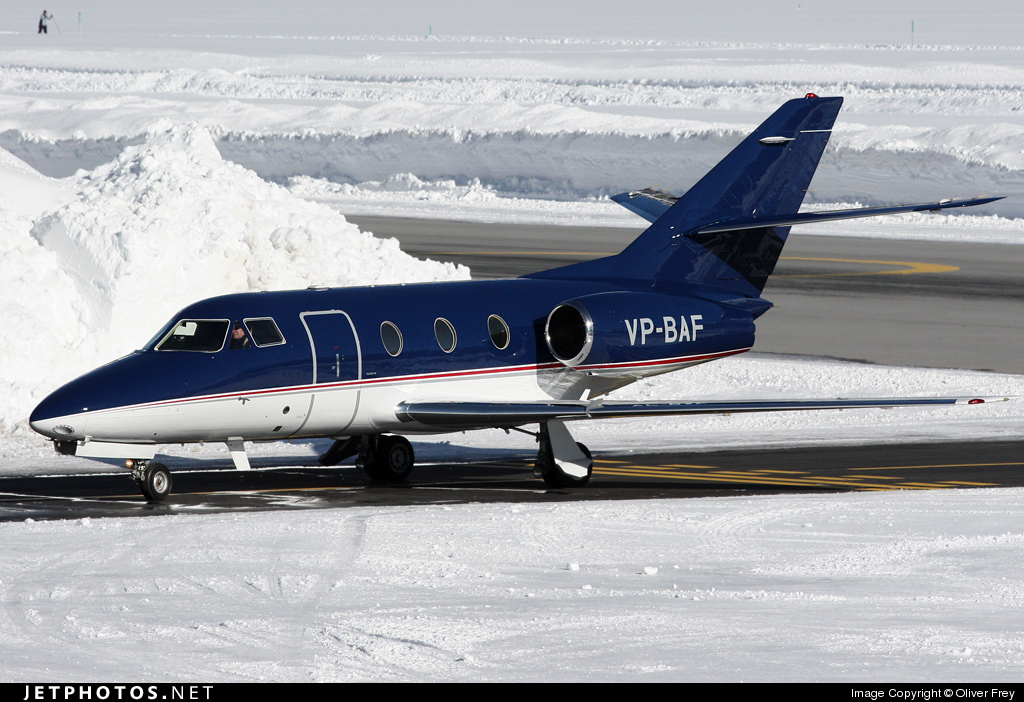
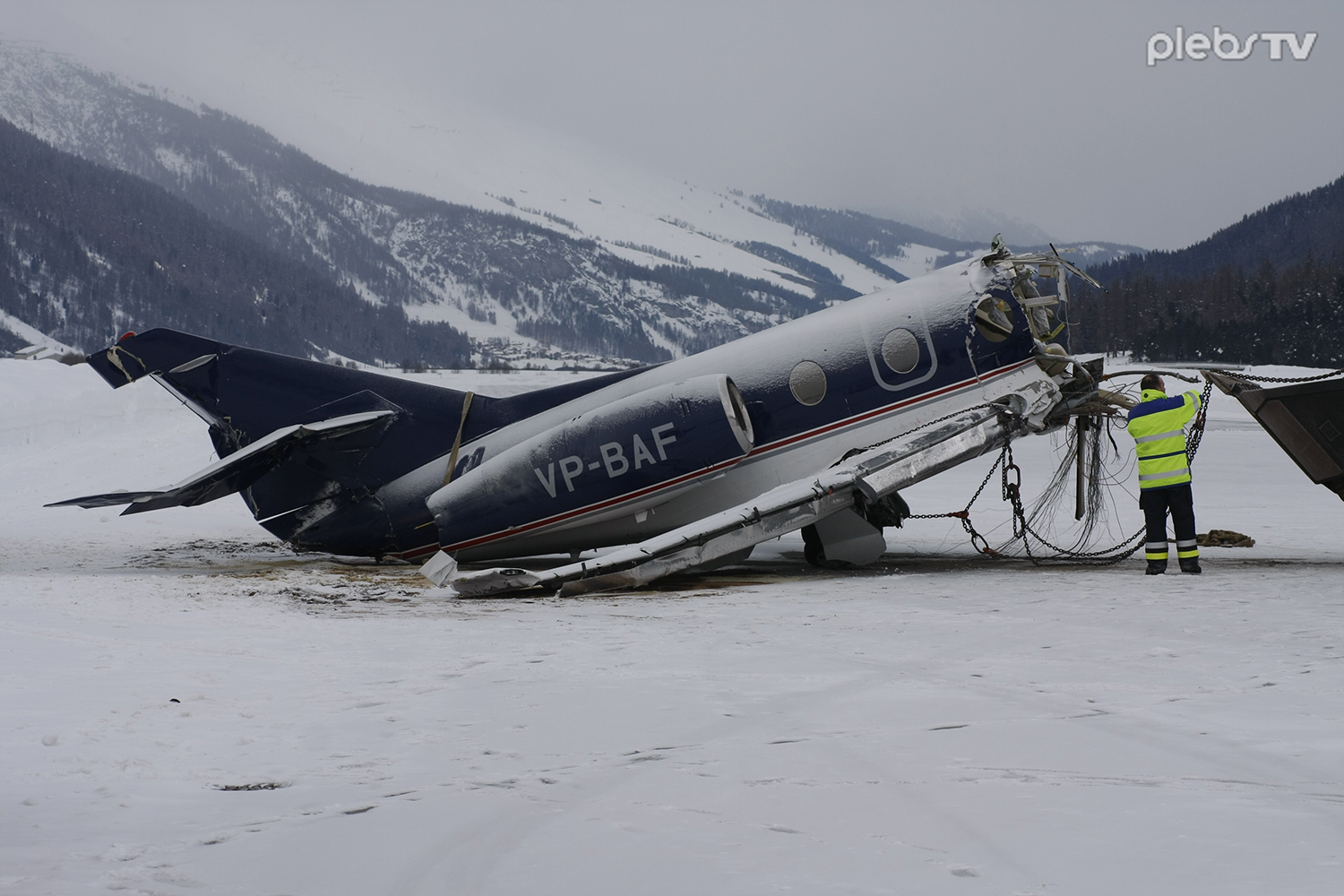

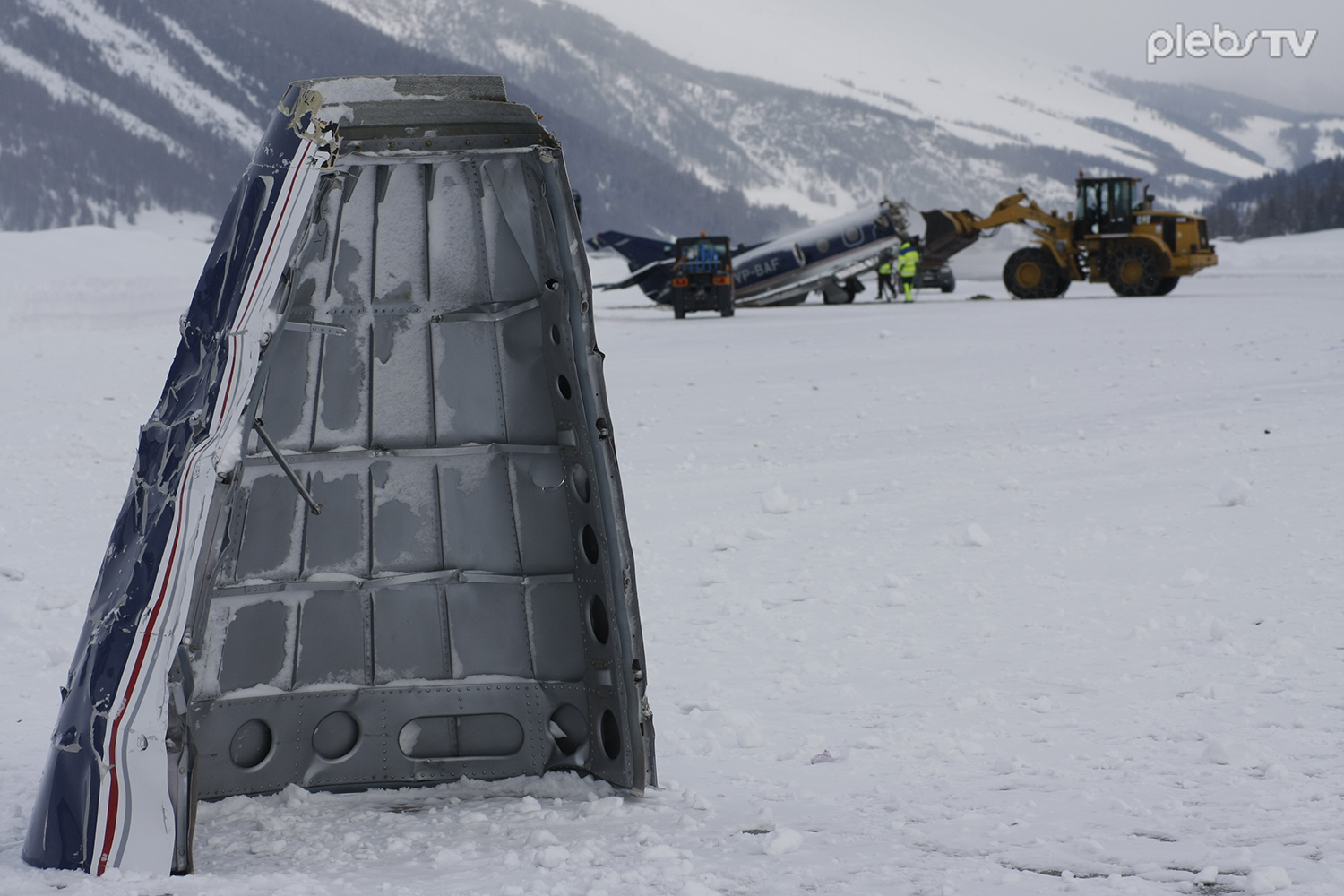
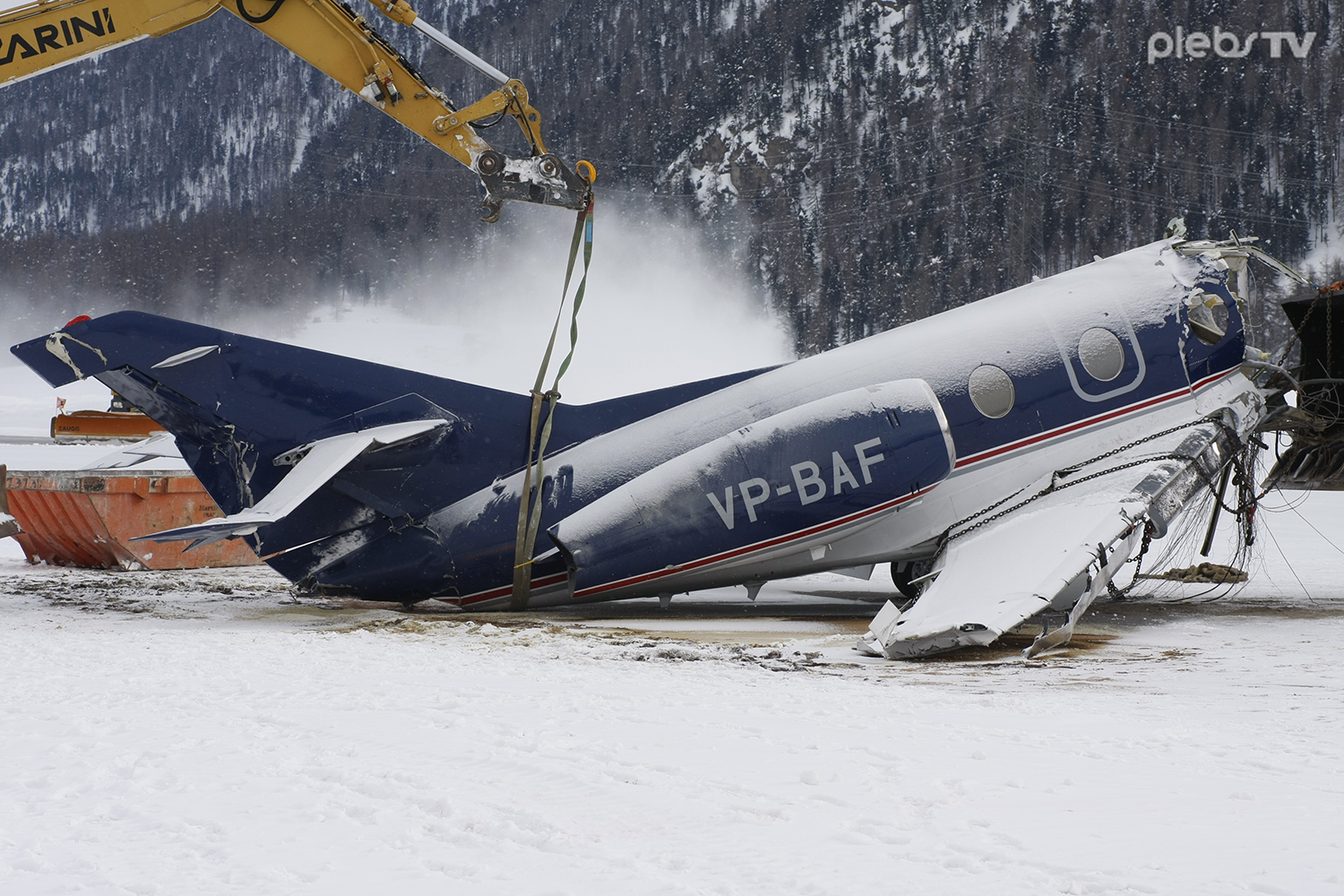
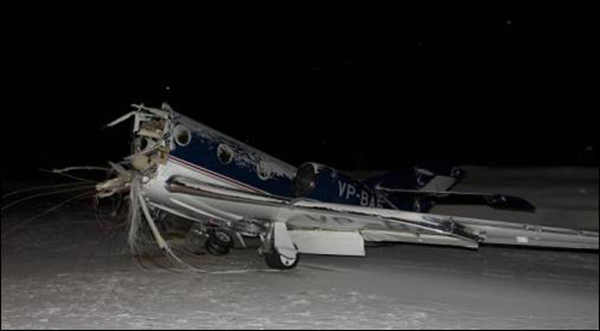
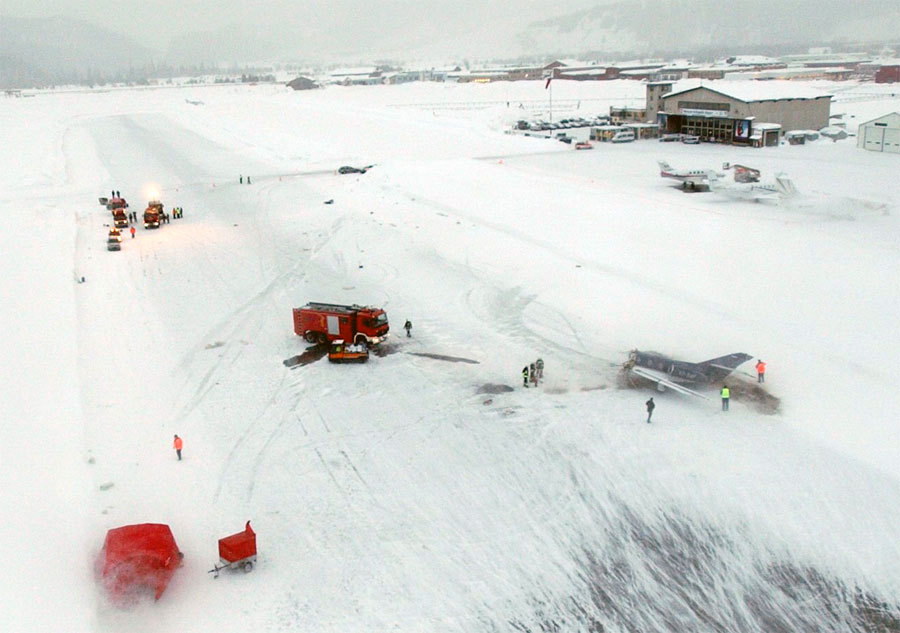

Crash of a Piper PA-46-350P Malibu Mirage in Samedan: 5 killed
Date & Time:
Apr 7, 2004 at 1121 LT
Registration:
D-EMDB
Survivors:
No
Schedule:
Egelsbach – Samedan
MSN:
46-22004
YOM:
1988
Crew on board:
1
Crew fatalities:
Pax on board:
4
Pax fatalities:
Other fatalities:
Total fatalities:
5
Captain / Total hours on type:
842.00
Aircraft flight hours:
2473
Circumstances:
Before the flight involved in the accident, the pilot himself had loaded and prepared the aircraft. According to the statement of the official on duty, neither the pilot nor the passengers were behaving conspicuously. The flight plan envisaged a VFR-IFR-VFR flight from Egelsbach (EDFE), south of Frankfurt, to Samedan (LSZS) in the Engadine. After take-off, the flight was to proceed under VFR (visual flight rules) to the waypoint RID and then to waypoint GERSA under IFR (instrument flight rules). From GERSA it was then planned to continue flying to Samedan under VFR again. The total duration of the flight was indicated in the flight plan as 75 minutes, and the endurance was indicated as 4 hours and 30 minutes. Take-off took place in Egelsbach at 10:09 LT. At 10:37 LT, the pilot contacted Swiss Radar Lower Sector North on frequency 136.150 MHz as follows: “... level two one zero inbound Trasadingen”. He was instructed to continue flying in the direction of GERSA. At 10:45 LT, the pilot contacted Radar Lower Sector South, on frequency 128.050 MHz, and continued flying as far as LUKOM. Based on an instruction from air traffic control, the aircraft left flight level 210 and descended to flight level 170. The pilot was instructed to continue flying direct to Samedan. At 11:10 LT, the pilot changed from instrument flight rules to visual flight rules and signed off from Lower Sector South. He attempted to contact Samedan. Initially, the communication was poor. After several attempts, he made contact at 11:15 LT on the Samedan aerodrome frequency. At 11:18 LT, the pilot reported that he was over the aerodrome and wanted to fly to the east to get below the cloud ceiling. No further radiocommunication took place. Shortly afterwards, witnesses saw the aircraft fall out of the clouds in an uncontrolled attitude. The aircraft crashed into the ground in a flat spin and with practically no forward motion. The aircraft was destroyed and all five occupants were killed.
Probable cause:
The accident is attributable to the fact that during an attempt to get below the clouds for the approach to Samedan, control of the aircraft was lost and it crashed into the ground. Exceeding the maximum permissible mass and the tail-heavy condition of the aircraft may have contributed to the accident.
The following factors were identified:
• On take-off, an endurance of 4½ hours was specified. Recalculation produced an actual take-off mass which was 722 lb over the MTOM.
• At the time of the accident, the mass of the aircraft was still 425 lb above the maximum take-off mass.
• The aircraft was loaded tail-heavy.
• The aircraft impacted the ground in a spin.
• There was partial cloud cover, though somewhat clearer to the east. Cloud conditions were changing relatively quickly.
• Visibility in Samedan below the clouds was good.
The following factors were identified:
• On take-off, an endurance of 4½ hours was specified. Recalculation produced an actual take-off mass which was 722 lb over the MTOM.
• At the time of the accident, the mass of the aircraft was still 425 lb above the maximum take-off mass.
• The aircraft was loaded tail-heavy.
• The aircraft impacted the ground in a spin.
• There was partial cloud cover, though somewhat clearer to the east. Cloud conditions were changing relatively quickly.
• Visibility in Samedan below the clouds was good.
Final Report:
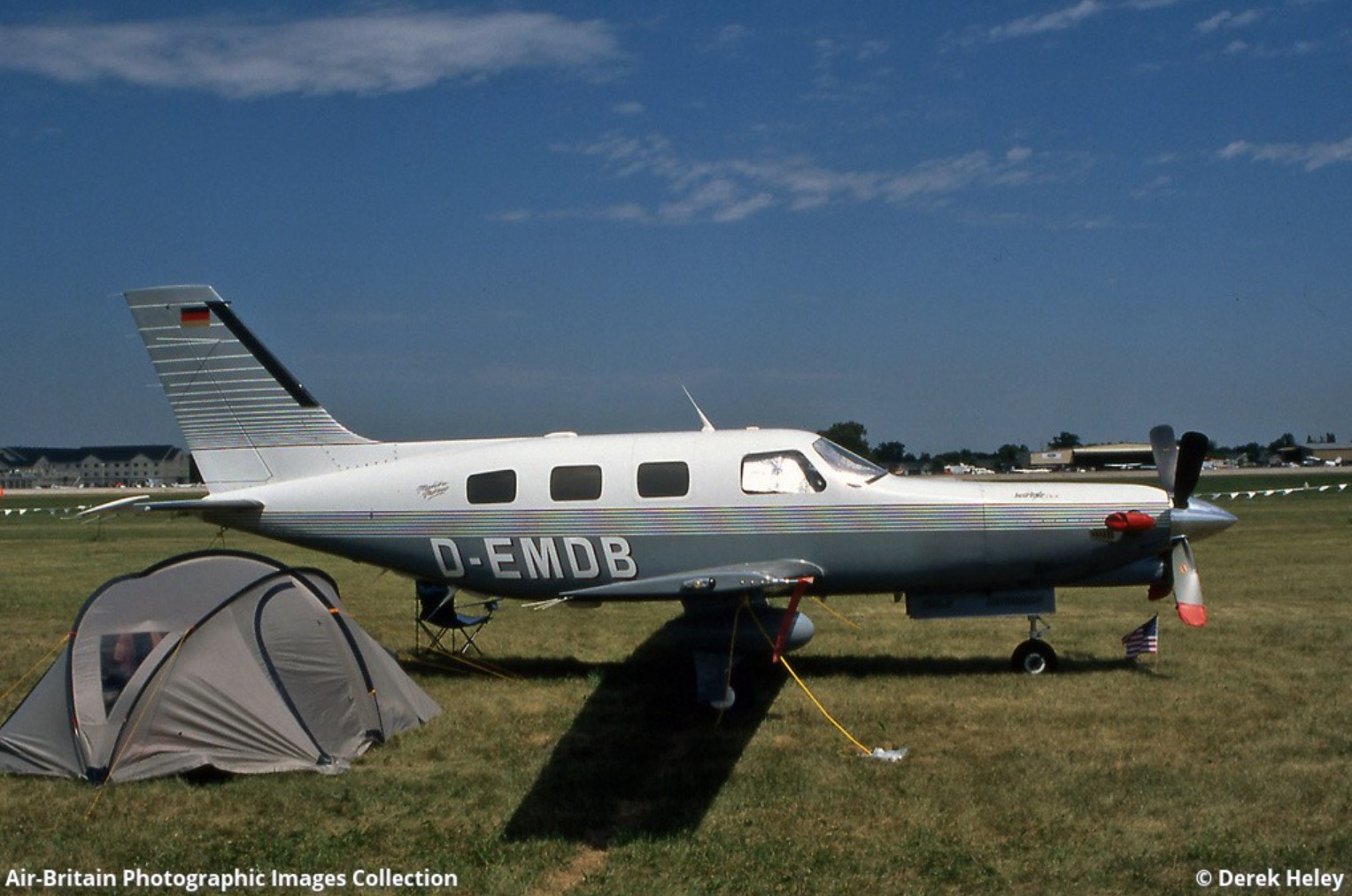
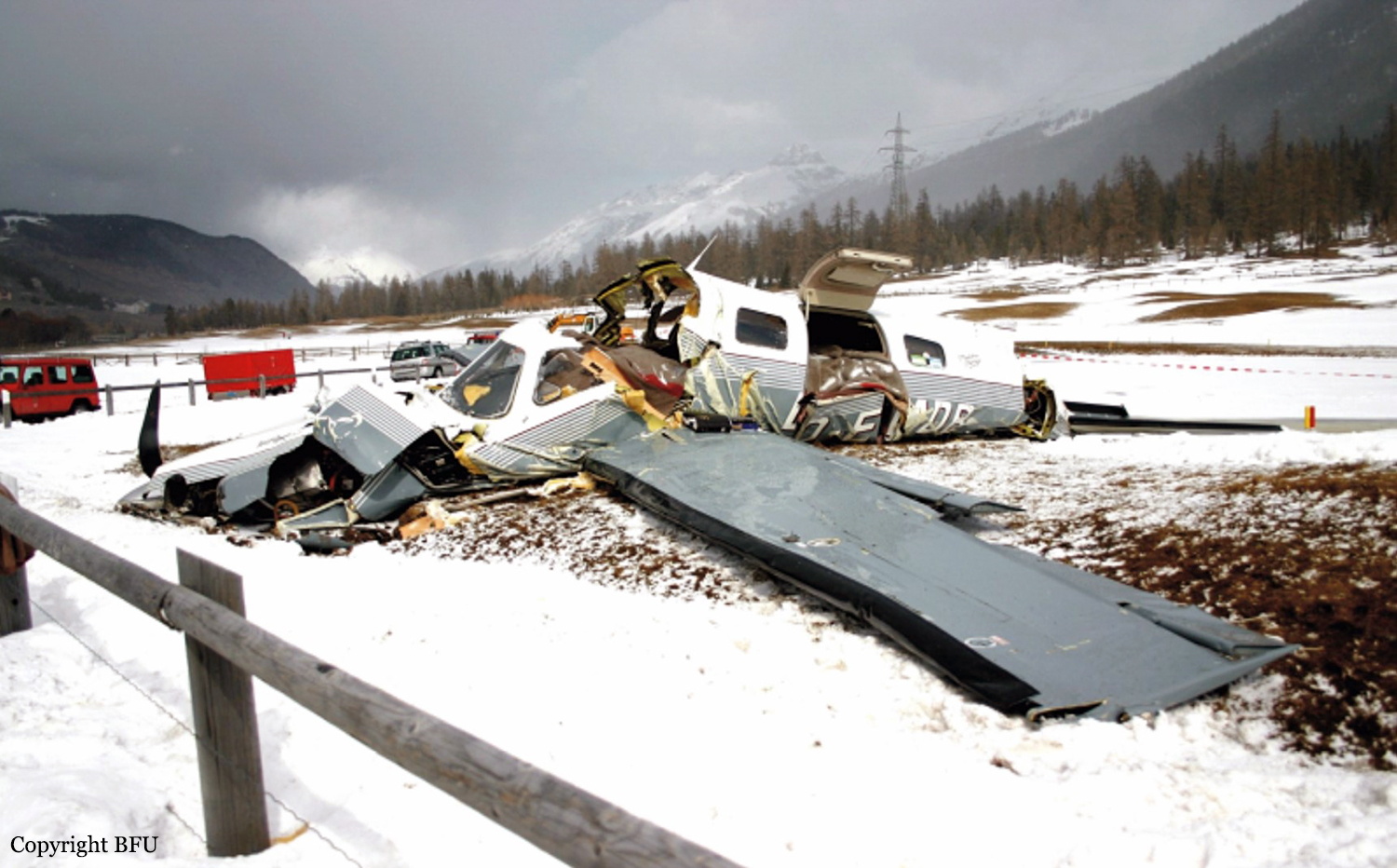

Crash of a PZL-Mielec AN-2R in Samedan
Date & Time:
Mar 15, 2003 at 1725 LT
Registration:
LY-KAG
Survivors:
Yes
Schedule:
Samedan - Samedan
MSN:
1G195-22
YOM:
1982
Crew on board:
1
Crew fatalities:
Pax on board:
2
Pax fatalities:
Other fatalities:
Total fatalities:
0
Captain / Total hours on type:
440.00
Aircraft flight hours:
4471
Circumstances:
The single engine aircraft departed Samedan Airport runway 03 for a local flight with two passengers and one pilot/instructor on board. While climbing to a height of 125 metres, the engine failed. The pilot initiated a 180° turn for an immediate landing on runway 21 when, at a speed of 140 km/h, the aircraft struck tree tops and crashed inverted to the right side of the runway. The wreckage was found 350 metres past the runway threshold and 20 metres to the right. All three occupants escaped uninjured while the aircraft was damaged beyond repair.
Probable cause:
The accident was caused by an engine failure in the climbing phase, in which the altitude of the aircraft was not sufficient for a 180° turn.
The following possibly contributed to the engine failure:
- Carburettor icing,
- Incorrect mixture regulation setting.
The following possibly contributed to the engine failure:
- Carburettor icing,
- Incorrect mixture regulation setting.
Final Report:

Crash of a Beechcraft 300LW Super King Air on Piz Sarsura: 2 killed
Date & Time:
Feb 14, 2002 at 1720 LT
Registration:
D-ICBC
Survivors:
No
Schedule:
Poznań – Samedan
MSN:
FA-227
YOM:
1993
Crew on board:
1
Crew fatalities:
Pax on board:
1
Pax fatalities:
Other fatalities:
Total fatalities:
2
Captain / Total hours on type:
1835.00
Aircraft flight hours:
4141
Circumstances:
D-ICBC was refuelled in Poznan to its maximum capacity of 2040 litres. An ATC flight plan was filed for an IFR flight. After the RENTA waypoint, VFR had actually been entered, but the crew had not filed the flight plan as a Y flight plan, as is prescribed for flights which begin under IFR rules and then end as a VFR flight. However, the flight plan was entered and transmitted as a Y flight plan by the competent unit in Brussels. Take-off time was scheduled for 14:20 UTC. Take-off actually took place at 14:35 UTC. No details are known about the history of the first part of the flight. The aircraft reached the border with Italian airspace in the planned air corridor M736 at flight level 250. The crew reported at 15:54:14 UTC to Padua ACC, sector LOW NORD on frequency 125.900 MHz: “..ua Buongiorno D-ICBC, Flight level 250, appro…approaching LIZUM Point” The air traffic controller instructed the crew to fly “LIZUM, LUSIL direct”. The crew confirmed “LIZUM .... direct DBC”. On enquiring, they received the information that they would be able to descend in about 10 miles. On the radar plot it can be seen that the aircraft did not fly as required direction LUSIL, but turned onto a heading of approximately 240° and was flying in the direction of Samedan. At 15:59:18 UTC, the clearance to flight level 170 was given; which is the lowest IFR flight level (minimum enroute altitude – MEA) in this area. At 16:02:03 UTC, the crew of D-ICBC was asked whether they were flying direct to Samedan. This was confirmed by them. They were then requested to report as soon as they wished to change from instrument flight rules to visual flight rules. At 16:05:16 UTC, the crew change from instrument flight rules to visual flight rules and were requested to contact Samedan Tower on frequency 135.325 MHz, which they did after a brief delay. The Samedan air traffic controller informed the crew that runway 21 was in use and that the QNH was 1012 hPa. He additionally requested them to report as soon as they flew into the valley. After leaving flight level 170, the aircraft turned slightly to the right onto a course of approximately 265° and maintained its continuous descent. At 16:11:25 UTC, the aircraft passed flight level 130 and began to turn slowly to the left. This turn brought the aircraft precisely onto the extended centre line of runway 21 in Samedan. The aircraft was last captured by the radar at 16:15:24. The last flight level indicated on the secondary radar was FL 101. A little later, the aircraft collided with the elevated terrain of the Sarsura glacier at an elevation of 9640 ft AMSL. Both pilots were killed immediately. The aircraft was destroyed.
Probable cause:
The accident is caused by the fact that the crew on its approach according to visual flight rules to Samedan aerodrome, under critical weather conditions and applying inappropriate flying tactics lost the situational awareness and theby the aircraft D-ICBC collided with the terrain.
The following findings were identified:
- The pilot was in possession of a senior commercial pilots licence, issued by the Polish authorities.
- There are no indications of any health problems affecting the pilot during the flight involved in the accident.
- The aircraft was admitted for traffic.
- The investigation produced no indications of any pre-existing technical faults which might have caused the accident.
- The mass and centre of gravity at the time of the accident were within the prescribed limits.
- As weather information, only METAR and TAF for Innsbruck, Zurich, Milan Malpensa and Milan Linate were found.
- No documentation for visual approaches to Samedan were found in the aircraft.
- In the documentation which was available to the investigators, it was not evident that any of the crew members had previously flown to Samedan.
The following findings were identified:
- The pilot was in possession of a senior commercial pilots licence, issued by the Polish authorities.
- There are no indications of any health problems affecting the pilot during the flight involved in the accident.
- The aircraft was admitted for traffic.
- The investigation produced no indications of any pre-existing technical faults which might have caused the accident.
- The mass and centre of gravity at the time of the accident were within the prescribed limits.
- As weather information, only METAR and TAF for Innsbruck, Zurich, Milan Malpensa and Milan Linate were found.
- No documentation for visual approaches to Samedan were found in the aircraft.
- In the documentation which was available to the investigators, it was not evident that any of the crew members had previously flown to Samedan.
Final Report:
